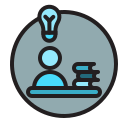Functions and Modules: Building Reusable Brains
Start with def greet(name): return f”Hello, {name}” and call it with different inputs. Clear names and small scopes make code friendly. Try writing one helper today and share it. We’ll review it and suggest tiny refactors that make a big readability difference.
Functions and Modules: Building Reusable Brains
The math, random, and datetime modules add capabilities instantly. import random opens doors to playful experiments. Try random.choice on your favorite snacks list. Share what you tested; we’ll propose variations that stretch your curiosity and reward your persistence.
Functions and Modules: Building Reusable Brains
Pathlib simplifies file paths, json tames structured data, and collections offers powerful containers. Start with one module, build a tiny script, and reflect on how it reduced effort. Post your mini project idea, and we’ll point to the perfect module to accelerate it.
Functions and Modules: Building Reusable Brains
Lorem ipsum dolor sit amet, consectetur adipiscing elit. Ut elit tellus, luctus nec ullamcorper mattis, pulvinar dapibus leo.




